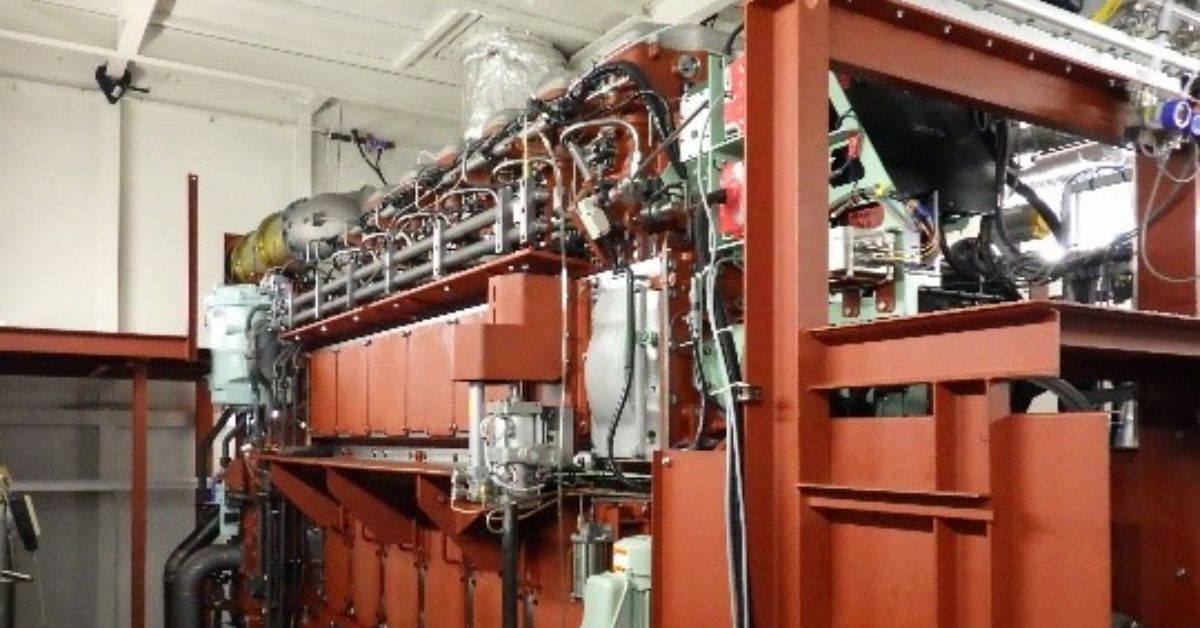– Towards the Realization of GHG Reduction through the Use of Fuel Ammonia in a Domestic Ship Engine –
NYK Line, IHI Power Systems Co., Ltd. (IHI Power Systems), Nihon Shipyard Co., Ltd. (Nihon Shipyard), Japan Engine Corporation, and Nippon Kaiji Kyokai (ClassNK) (hereafter, “the consortium”) are pleased to announce that the world’s first four-stroke ammonia-fueled engine has successfully completed a land-based test for the stable combustion of fuel ammonia having an 80% co-firing ratio as part of a demonstration project for the commercialization of vessels equipped with a domestically produced ammonia-fueled engine.
Overview
This initiative concerns the development of vessels equipped with a domestically produced ammonia-fueled engine. It was initiated in October 2021 by NYK, Japan Engine Corporation, IHI Power Systems, and Nihon Shipyard as part of the Green Innovation Fund Project* of the New Energy and Industrial Technology Development Organization (NEDO).
In April 2023, IHI Power Systems commenced operational tests at its Ota plant (Gunma Prefecture) on a 280 mm bore** four-stroke ammonia-fueled marine engine for the main engine of coastal vessels (i.e., ammonia-fueled tugboats, hereafter “A-Tug”).
Ammonia does not emit CO2 during combustion and is therefore expected to be a next-generation fuel that contributes to combating global warming, but it is a difficult substance to handle due to its toxicity. This time, while thoroughly ensuring safety, a test increased the mixing ratio of fuel ammonia within the engine to 80%, and tests were conducted on the exhaust gas aftertreatment devices and fuel supply systems, etc., and the stable integrated operation of these systems was successfully achieved for the first time.
The tests also confirmed that emissions of dinitrogen monoxide (N2O), which has a greenhouse effect about 300 times greater than carbon dioxide (CO2), and unburnt ammonia were virtually zero, and there was no ammonia leakage from all demonstration equipment during operation and after shutdown.
Prior to the test, a demonstration equipment inspection and technical review meeting were held on 11 April at IHI Power Systems’ Ota plant by NYK, IHI Power Systems, Nihon Shipyard, and ClassNK. Keihin Dock Co., Ltd., which is responsible for the conversion of the A-Tug, and Shin-Nippon Kaiyosha, which is responsible for the operation and management of the vessel, also participated in the inspection of the demonstration equipment to confirm the technologies involved in its construction and operation
Future plans
The engine will be installed on A-Tug, which will be completed in June 2024, after further land-based testing of the engine to maximize greenhouse gas (GHG) reductions through further improvement of the co-firing rate.
Furthermore, based on this research and development for domestic vessels, efforts will be made to develop a 250 mm bore engine for the auxiliary engine of an oceangoing vessel. That auxiliary engine will be installed on an ammonia-fueled ammonia gas carrier (AFAGC, scheduled for delivery in October 2026) under joint development by NYK, Nihon Shipyard, Japan Engine, IHI Power Systems, and ClassNK. Starting with the success of this demonstration test, the consortium will continue to work together to strengthen the international competitiveness of the Japan maritime cluster, with the aim of building the world’s first ammonia-fueled ships and achieving safe navigation, including by contributing to the development of international rules.







